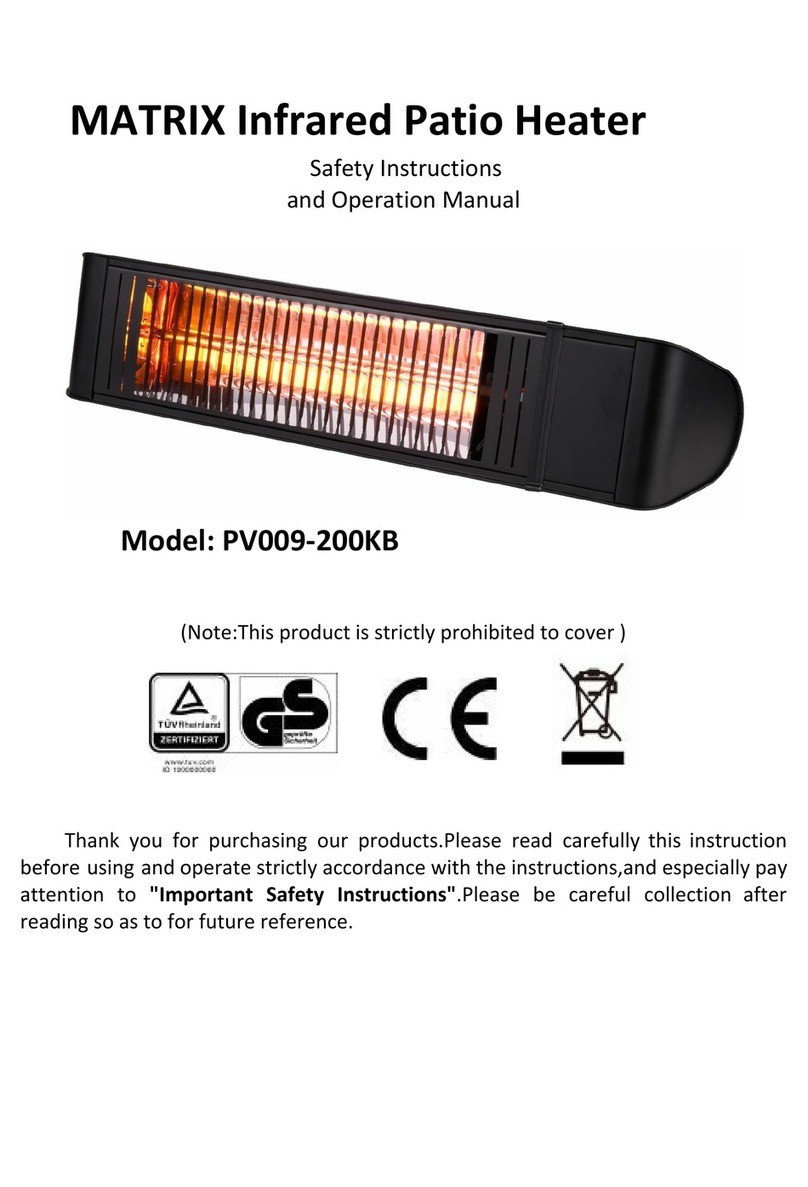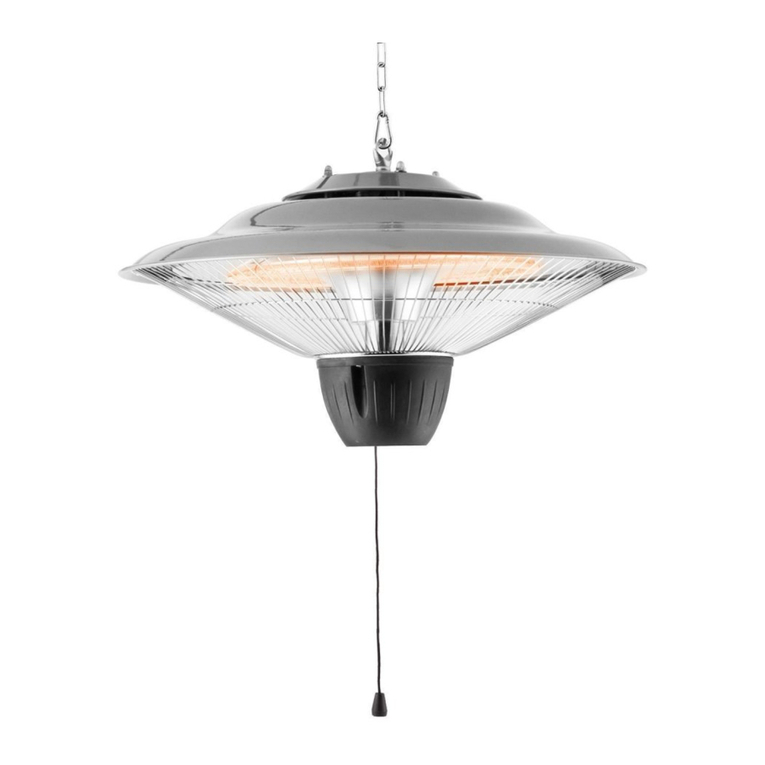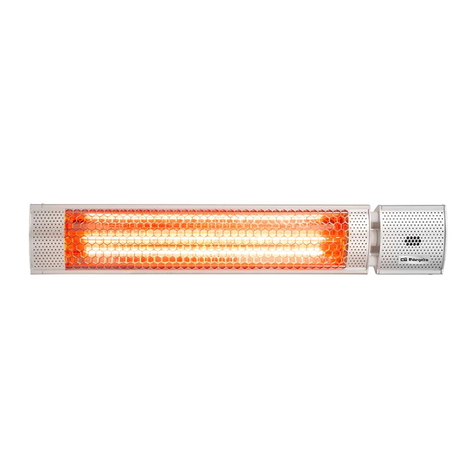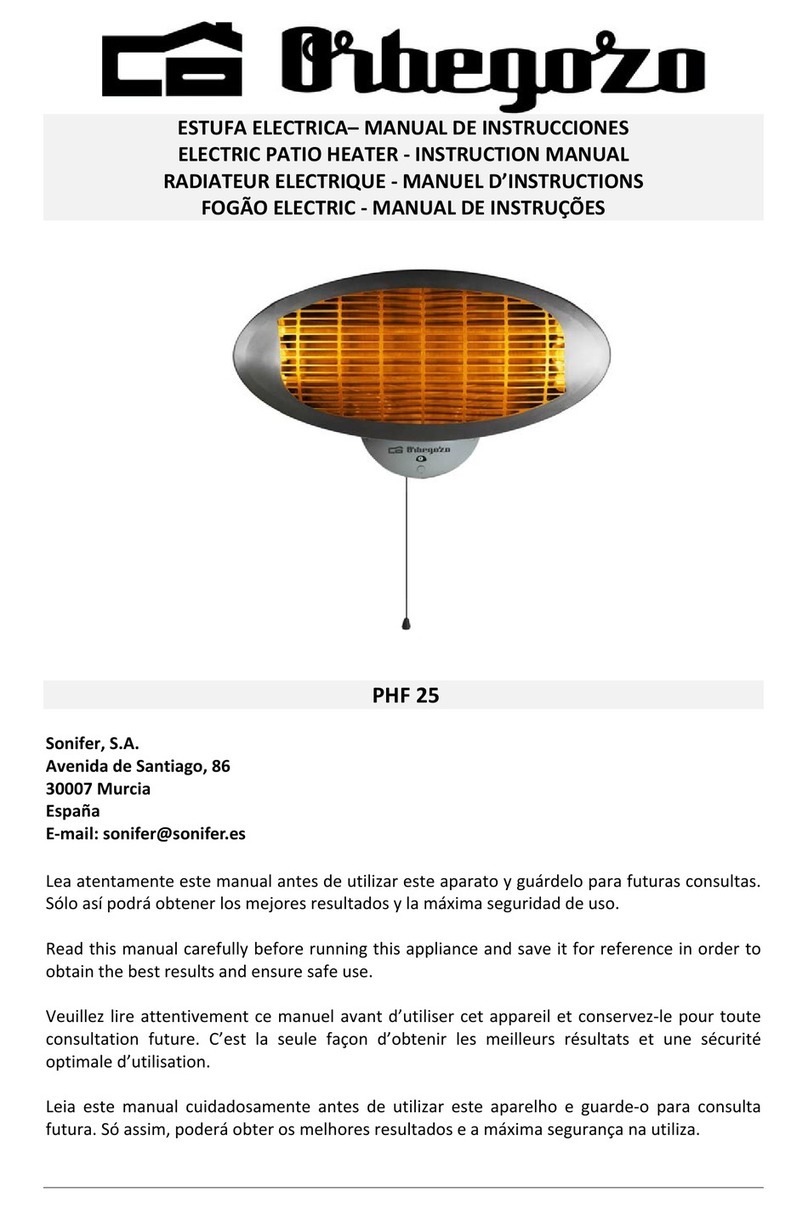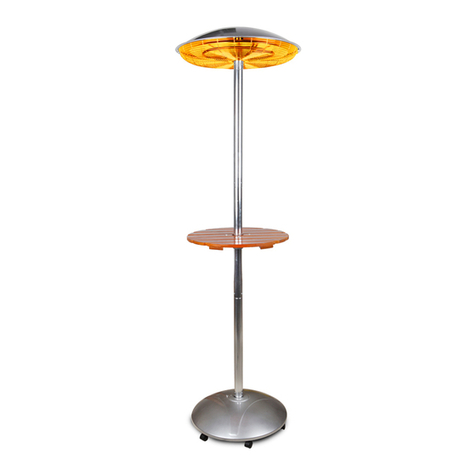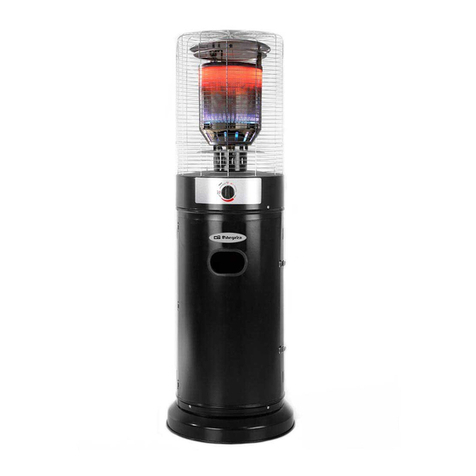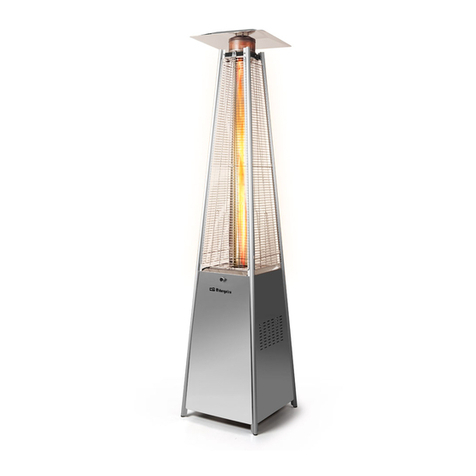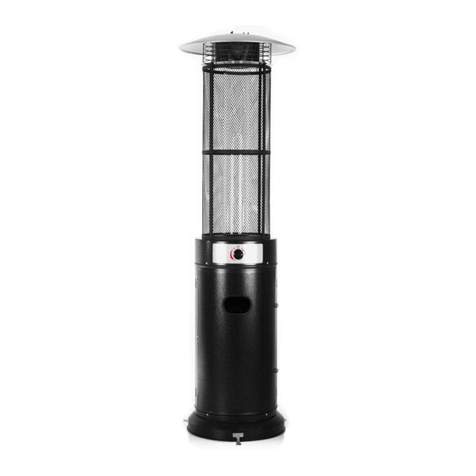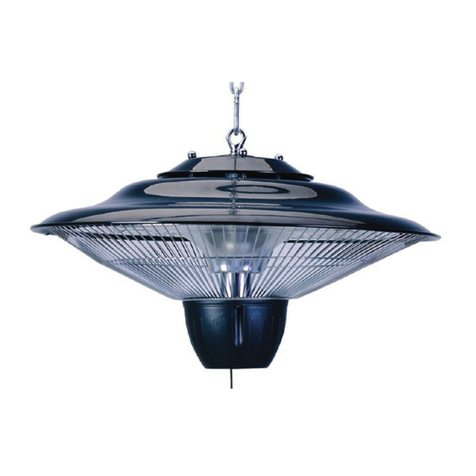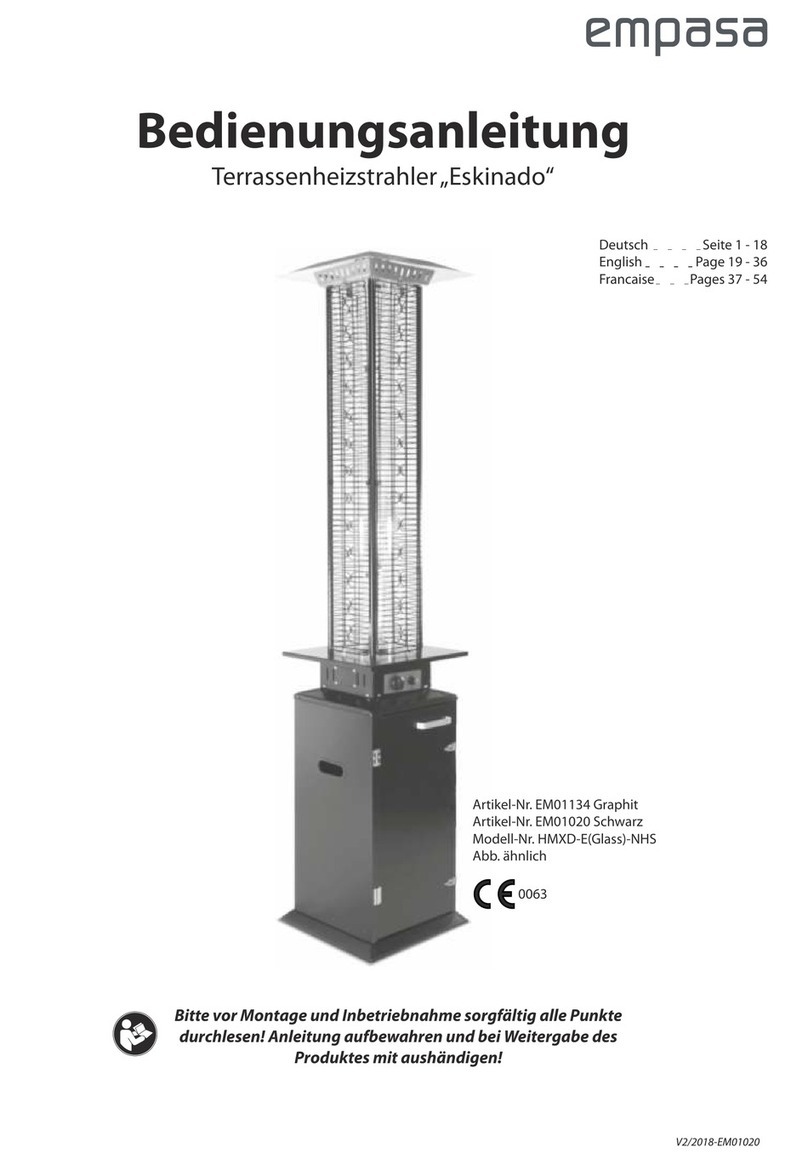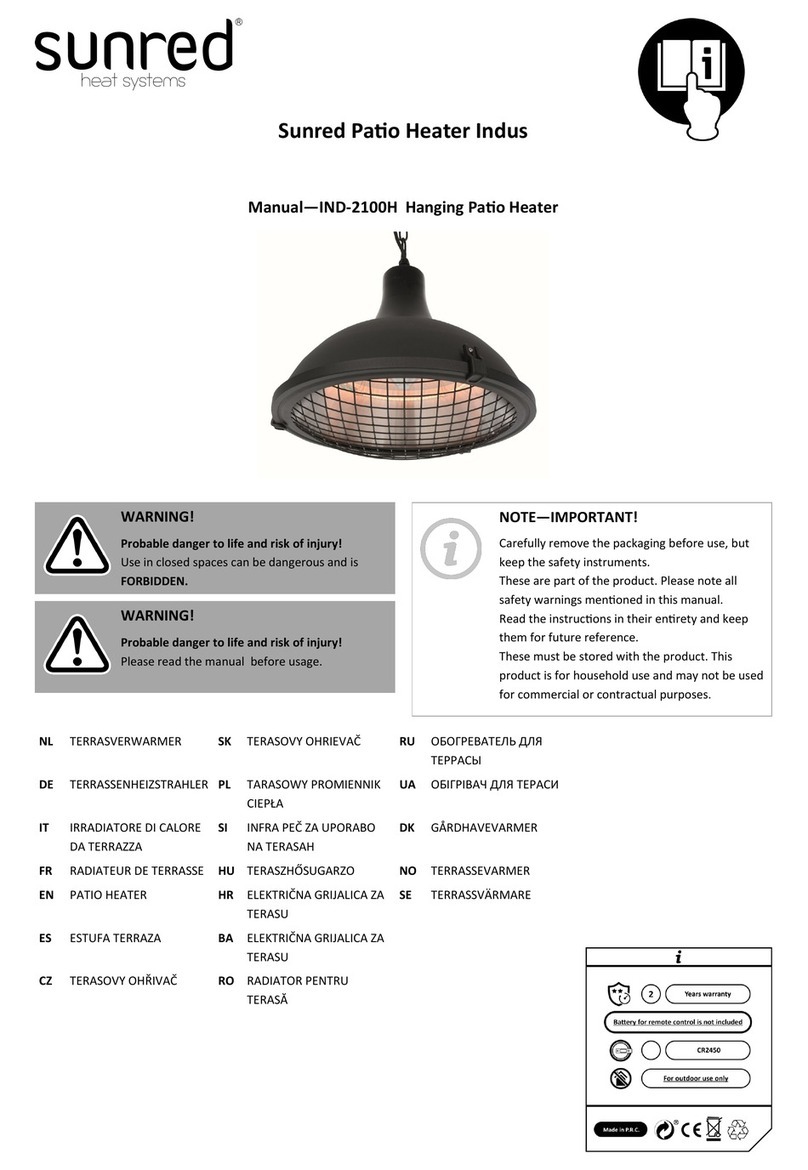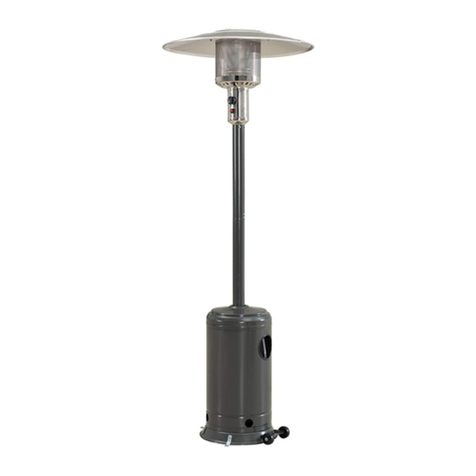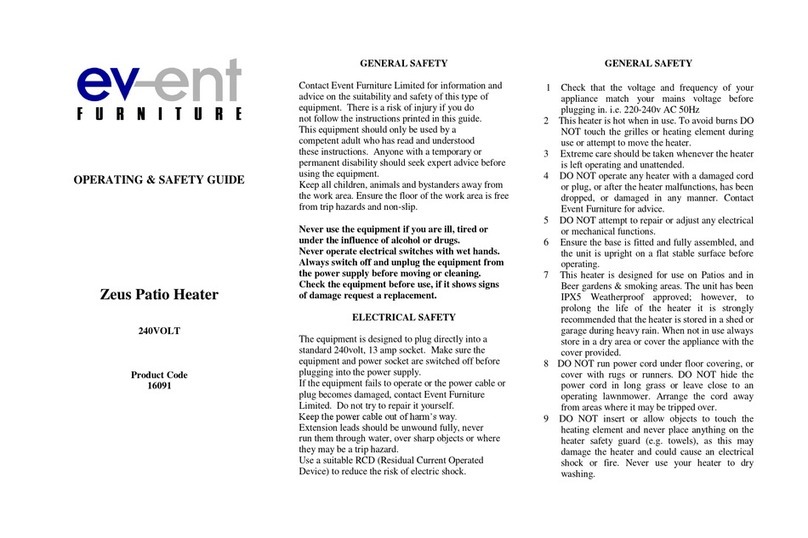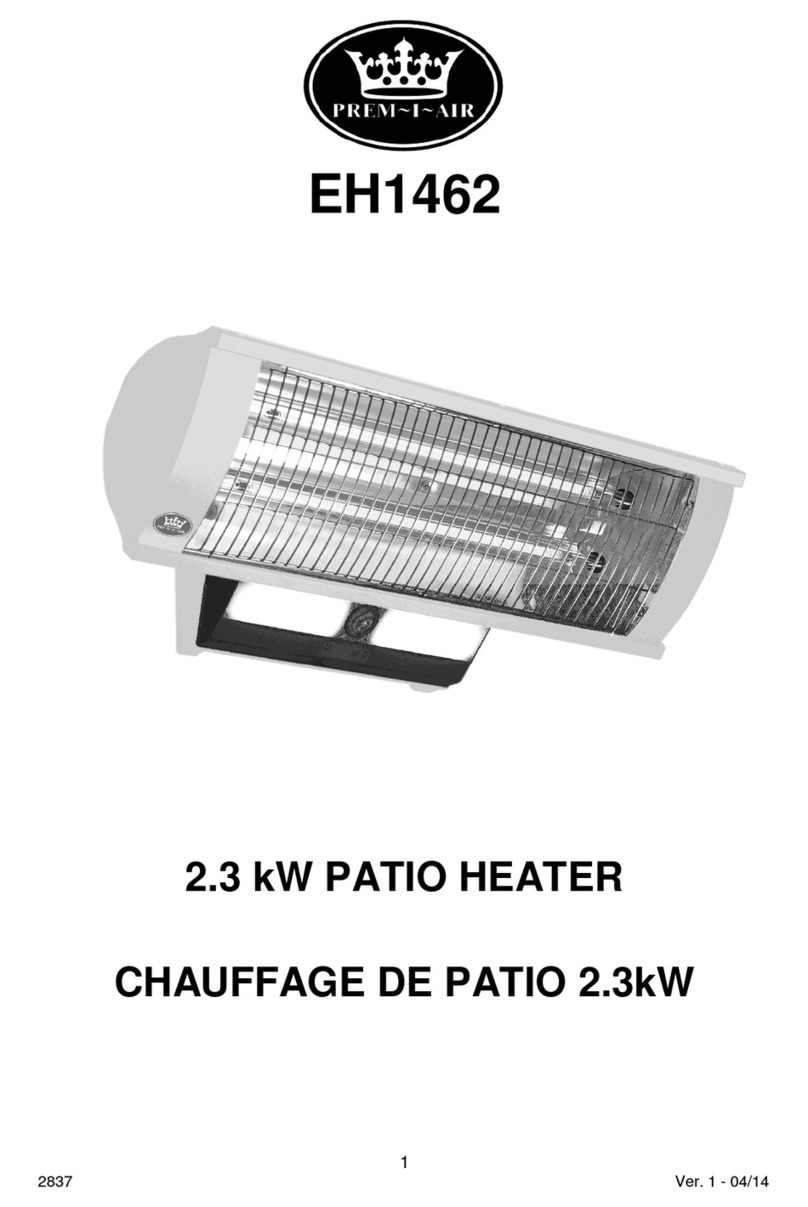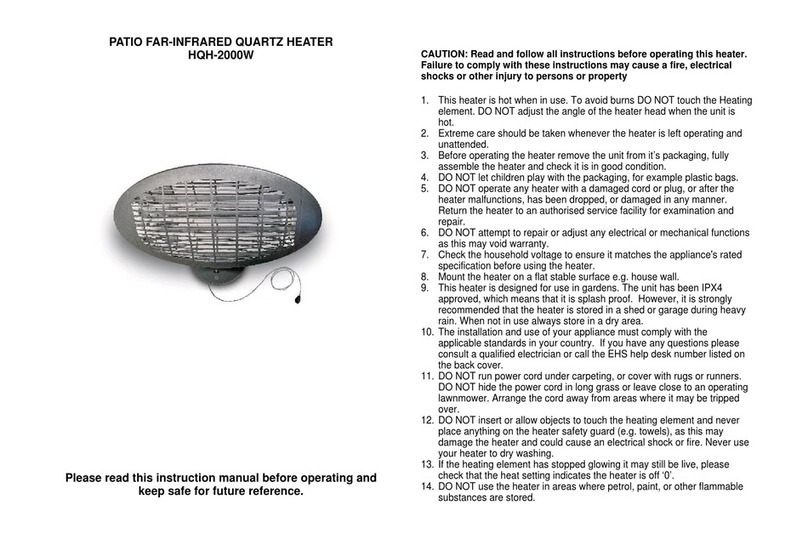
PHE 50 PHE 70
3
•No mueva la estufa después de haberla apagado hasta que se haya enfriado.
•M ant enga limpia la abertura de ventilación de la carcasa para la botella.
•No pinte la pantalla radiante, el panel de control o la cubierta protectora del reflector.
•Se deben mantener limpios el compartimento para los controles, el quemador y los
conductos de aire de circulación de la estufa.
•Se deben limpiar tantas veces como sea necesario.
•El depósito de gas LP se debe apagar cuando no se está utilizando la estufa.
•Revise inmediatamente la estufa si ocurre cualquiera de estas cosas:
- La estufa no se calienta y no alcanza la temperatura adecuada.
- El quemador hace un gorgot eo durante el uso (un ligero ruido es normal
cuandoel quemador está apagado).
- Hay olor a gas y las llamas del quemador tienen un color amarillo intenso.
•El montaje de la manguera/ regulador de LP no debe estar en lugares donde la gente se
pueda tropezar y nunca en una zona donde la manguerapueda sufrir daños
accidentales. Cualquier protección o dispositivo protector retirado para el
mantenimiento de la estufa debe sustituirse antes de poner en funcionamiento la
estufa.
•Cambie la botella de gas en una zona bienventilada, lejos de cualquier fuente
inflamable.
•Compruebe queel sello del regulador está colocado y que está en buen estado.
•No obstruya los orificios de ventilación del alojamiento de la botella.
•Tanto los adultos como los niños deben mantenerse alejados de las superficies a alta
temperatura para evitar quemaduras o que se prenda fuego a la ropa.
•Los niños deben estar vigilados siempre que estén en la zona donde se encuentra la
estufa.
•No se debe colgar ropa u otros materiales inflamables en la estufa ni tampoco
colocarla sobre la estufa o cerca de ésta.
•Características del LP: inflamable, explosivo, más pesado queel aire por lo que se
queda en las zonas bajas.
•En su estado natural, el propano no huele mal. Por su seguridad, se añade una
sustancia quehuele a col podrida.
•El contacto con LP puede ocasionar quemaduras por frío en la piel.
•Esta estufa se entrega de fábrica sólo para uso de gas LP.
•Utilice únicamente botellas de gas LP de “ 20lb” con la certificación de la CEE (las
mismas que se utilizan normalmente en las cocinas de gas) con válvulas de seguridad.
•Estas válvulas se pueden identificar rápidamente por sus roscas externas e internas.
•No utilice nunca una botella con el cuerpo, la válvula, el cuello o el aro de base
dañados.
•Si la estufa no se está utilizando, la válvula de control debe estar apagada.
•Realice siempre una prueba de fugas en las conexiones de gas cuando conecte una
nueva botella (consulte la pág. 4). No utilice nunca una llama para realizar la prueba de
fugas ni fume durante la misma.
•Importante: La pantalla antillamas es una pieza que se desgasta rápidamente.


